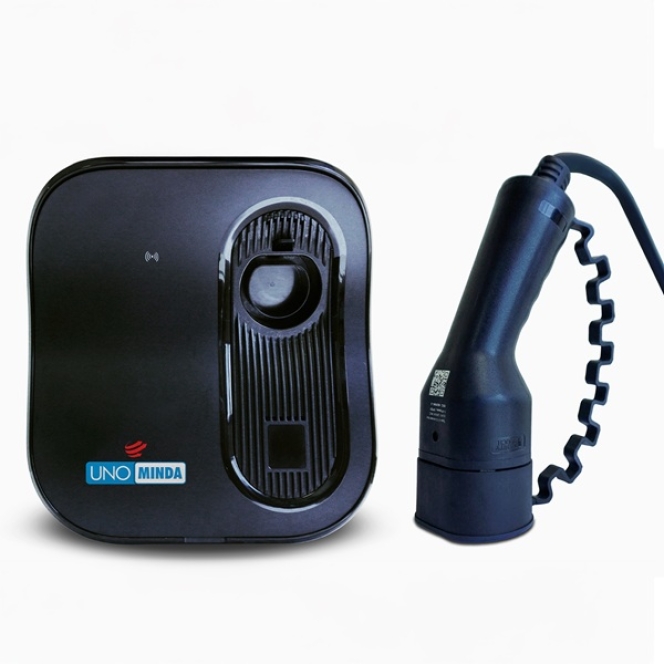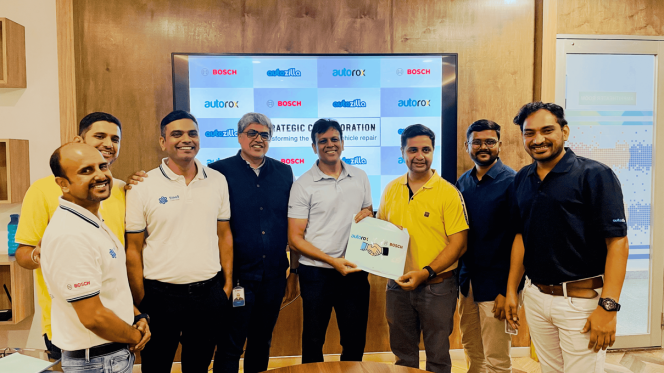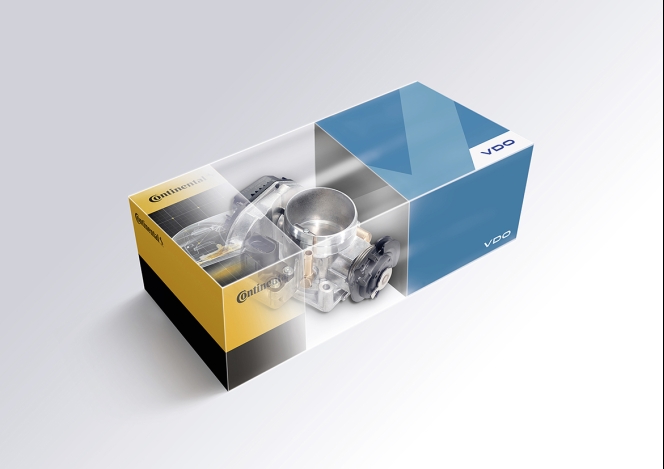
Auto Care Association, the voice of the USD 392 billion auto care industry, provides advocacy, education, networking, market intelligence, technology standards and communication resources to its member companies. The estimated global automotive aftermarket across all vehicle classes is USD 1.77 trillion. The United States accounts for USD 405 billion. It is expected to grow at a CAGR of 3.4 percent and reach USD 448 billion in 2022. This growth will be fuelled by the increase in the miles driven, the average age of vehicles and in the number of vehicles above 12 years which was 43 percent of all light vehicles in 2019.
Challenges keep mounting with the multiplicity of disruptions in the automotive space, and with the OEM technologies that make customers depend on their supply chain, products or preferred service centres. Bill Hanvey, President and CEO of Auto Care Association, told T Murrali in an exclusive interview that “Just as the aftermarket continues to evolve through technology advancements, we will continue to help the industry to go forward. The moment we hear about potential new disruptions, our teams will gear up to get the right information, educate the industry, and work with partners to develop solutions, through standards, training, legislation, data and intelligence.” The excerpts:-

Q: Globally, the automotive industry has been facing several disruptive technologies like the emergence of alternative and autonomous vehicles. How will these influence your members and how will Auto Care Association guide them to deal with the situation?
Hanvey: There have been disruptive technologies in our industry all the way from the key ignition rather than a crank start. Electronic fuel injection was also predicted to be our demise, but guess what, our industry has adapted and thrived with each technological challenge. Currently, ADAS systems, embedded and encrypted software, and telematics are the biggest disruptors on the horizon for our industry. Where some of these technologies differ from those in the past is that many of them require either legislation or regulation in order to standardize repair procedures.
The Auto Care Association has invested heavily on our government affairs and emerging technology teams to meet these and future challenges. We are developing and driving the adoption of the secure vehicle interface to access data cyber-securely utilizing ISO standards and working with industry experts to develop standards to align and repair ADAS systems.
Q: With the popularity of electric vehicles, there will be far-reaching consequences. They will eliminate about 30 percent (in terms of value) of components that go into the traditional vehicles hauled by Internal Combustions engines. This will definitely affect the aftermarket and service centres. How do you see this emerging scenario and what do you think are the ways out for the industry?
Hanvey: While EVs are certainly the wave of the future, they still represent less than 2 percent of the total vehicles in the US. Forecasts for 2030 show less than 5 percent of the VIO will be electric. Most of the changes will be seen in the adaptation of the internal combustion engine such as start-stop technologies and the use of turbochargers and upgraded transmissions to deliver power from smaller-sized engines. The maintenance and repair of true EVs will see a dramatic shift in the way we currently associate car repair and most of these repairs will be on the software updates and will require technicians with completely different skill sets.
Q: How do you see the expansion of the DIY segment with the disruptions in the automotive industry?
Hanvey: No matter the disruptor, there have always been DIYers to find and implement solutions. That’s one of the things I love about this industry – where there are enthusiasts, there’s innovation. And there will always be automotive enthusiasts and people willing to tinker with their vehicles, which is great for us.
Q: The industry you represent has been facing threats from international free trade. Can you explain the current challenges on this front and your plan to interfere in favour of the industry? The automotive industry in the US has also been encountering several challenges on account of wide ranging tariffs and regulatory shifts. What, according to you, is the way out for the industry? Can you share with us your initiatives to resolve these issues?
Hanvey: Our priority is to ensure that the Trump administration does not move forward with the proposed Section 232 Tariffs on imported autos and auto parts. Such action would be disastrous for the US auto care industry. An Auto Care Association study has found that 25 percent tariff on auto parts would result in the loss of over 100,000 US jobs throughout the supply chain. Additional studies assert that the US consumers would pay USD 7,000 more for a new vehicle and their annual cost of ownership would increase by USD 700. We are an active member of the Driving American Jobs coalition, which has been pressurising the administration and Congress to ensure these tariffs never go into effect.
The auto care industry supports efforts to deal with China’s unfair trade practices, particularly related to intellectual property and forced technology transfer; however, China remains a critical trading partner in our global supply chain and the ongoing trade war only harms our members and the US consumers. Our distributor and retail members have already begun to pass the costs of these tariffs to consumers, raising prices and forcing drivers to defer critical safety-related service. Furthermore, while some members have been able to identify alternative suppliers in other countries, certain safety-related products such as aftermarket brake rotors are almost exclusively manufactured in China. Moving production back to the US or to another country is both time and cost-prohibitive. Supply chain decisions must be made with absolute certainty, and currently, given the volatility of our international trade policy, there is none.
The Auto Care Association frequently testifies on the trade issue before Congress and the administration. In addition, we recently welcomed 300 of our members to Washington, D.C. to meet face-to-face with the members of Congress and communicate our industry’s trade positions. Due to widespread industry opposition to the US’ current strategy, our hope is that our ongoing efforts will scale back detrimental trade policies or at least prevent any future tariff increase.
Q: Auto Care Association has set up standards to enable exchange of information. How is it helping your members and the end-users?
Hanvey: ACES (Aftermarket Catalogue Exchange Standard) is compiling an electronic catalogue with high-quality, consistent content about thousands of product-lines possible and efficient. Using ACES, suppliers can describe vehicle configuration with valid database values. Suppliers can define product terminology with a database of product names, all in a computer-readable format, for the exchange of this information from supplier to receiver.
PIES (Product Information Exchange Standard) defines the rules for managing elements of product information, product images, product attributes and also the format of the information and the valid values. With PIES, customers and those in the distribution chain will know what a product looks like, what it weighs, the size of the box and how many are packed inside, the length of the warranty, the country of origin, the performance attributes, and much more.
Together, these standards enable auto care businesses across the globe get the right product, to the right place, at the right time, with predictable results, faster innovation and lower costs. The most widely used standards in North America, ACES and PIES, are now available in Chile and Colombia.
We have also introduced a new product called UniLink that allows you to map a part to a vehicle platform rather than a ‘year-make-model’ enabling you to determine globally what parts fit where and in what country. This significantly reduces product management time and effort for product research around the globe.
Q: How do you see the growth of the US aftermarket vis-à-vis the global aftermarket industry?
Hanvey: We collaborated with Hanover Research this year to estimate the global aftermarket for passenger cars, light-duty, medium-duty and heavy-duty vehicles. The estimated global automotive aftermarket across all vehicle classes is USD 1.77 trillion. With the US representing USD 405 billion and projected to be USD 448 billion in 2022, the US accounts for over 25 percent of the entire world’s aftermarket ecosystem.
Q: What are the initiatives taken by the Auto Care Association to support this growth trend?
Hanvey: Because we know that the industry and the businesses within it are not bound by walls, borders or even class of vehicles, the association expands its benefits and resources to help anyone in the auto care industry to take advantage of these trends:
a) Auto care businesses are looking for data to make better business decisions, particularly, how products are selling compared to the market, identifying shifts in demand, category performance and sales forecasting. In response, we launched Demand Index to help companies know how their products are performing against the market. autocare.org/demandindex
b) Optimizing the supply chain, reducing costs and research time continues to be a need in the industry as well. Many businesses spend countless hours and dollars identifying which of the products they sell fit vehicles worldwide. In response, this year, we debuted UniLink to create those connections. autocare.org/unilink
c) We know that many businesses don’t just dabble in light, medium and heavy duty classes, so we launched Off-Highway and Equipment Data in VCdb to help those businesses sell those parts more efficiently for segments like agriculture, construction, marine, railway, and more.
Q: What is your outlook for the growth of the aftermarket in the next five years?
Hanvey: This USD 405 billion industry in 2019 is expected to grow at a CAGR of 3.4 percent and reach USD 448 billion in 2022. This growth will be fuelled by a gradually increasing number of miles driven, the increasing average age of vehicles and the growth of vehicle population in the 12 year and older category, which represented 43 percent of total light vehicles in 2019. Motorists recognize that vehicles are engineered to last longer and are willing to take advantage of the cost of vehicle maintenance and repair vs the cost of purchasing a new vehicle. Interesting but not surprising to note is that the 5-year forecast of CAGR for most auto care sales show forecast in the high 2 and 3 percent, while electronic shopping is projected at 8.6 percent.
Q: Can you tell us about the ‘Be Car Care Aware’ campaign and how it has evolved since introduction in educating consumers? What are the products in focus now?
Hanvey: The Car Care Council (and its `Be Car Care Aware’ campaign) announced early this year an agreement with the Automotive Industries Association of Canada (AIA Canada) and the Asociación Nacional de Representantes, Importadores y Distribuidores de Refacciones y Accesorios para Automóviles, A.C. (ARIDRA) to create Car Care Council North America to direct the ‘Be Car Care Aware’ consumer education campaign in the US, Canada and Mexico. Car Care Council North America builds on the positive reputation and image of the current Car Care Council that has been funded and directed by the Auto Care Association for nearly 20 years as a credible source of information about the benefits of vehicle maintenance, care and repair. As everyone working in the global auto care industry knows, proper vehicle maintenance is a universal issue and a challenge that has no borders. Expanding the Car Care Council initiatives in Canada and Mexico was a logical next step in educating consumers about the benefits of regular vehicle upkeep.
Q: A Few years ago the 15 year or older vehicles were the fastest growing segment in the US. What is the current status and how has it changed the business for your members?
Hanvey: Evidence of the aging light vehicle continues. Vehicles in the 12+ year old category now comprise 44.3 percent of total light vehicles (up from 32.3 percent in 2009) and is growing at a five-year CAGR of 4 percent.
Q: Could you update on Auto Care Association’s working model of the secure vehicle interface that allows access to the vehicle’s data at a point in the vehicle?
Hanvey: The automakers have pushed back on the aftermarkets need to access vehicle data and state that we need to come up with a safe, secure and standardized method for access to vehicle data. Well - guess what - talk about meeting the tech challenges of our industry today; we had working examples at AAPEX 2019 in the Emerging Technologies booth. There, attendees were able to view a demo of the Secure Vehicle Interface, implementations of recently-approved international standards and how consumers could control to whom their vehicle data was sent.
Q: What is the update on the association approaching OEMs to share telematics data?
Hanvey: Despite attempts to negotiate a settlement by the Auto Care Association and others, no such agreement has been reached to resolve the data access/control issue with the OEMs.
Q: Emulating the tagline, ‘Independence Drives Us,’ your members have been independent and did not rely on the OE to perform vehicle repairs. With lot of disruptions in the automotive space, do you see this as a challenge? If so, what are the initiatives taken by Auto Care Association to mitigate these issues?
Hanvey: It continues to be a challenge as OEMs create technologies that create dependence on their supply chains, products and preferred service centres. But just as the aftermarket has continued to evolve throughout technology advancements, we will continue to help the industry do the same, now and in the future. The moment we hear about potential new disruptors is the moment our teams mobilize to get the right information, educate the industry, and work with partners to develop solutions, whether it’s standards, or training, or legislation, or data and intelligence. This is why we do what we do; we want to allow free competition, choice, and a fair playing field for generations to come. (MT)
Automoto Launches InspektAI To Drive Tech In India's Used-Car Market
- By MT Bureau
- December 03, 2025

Mobility-tech startup Automoto has launched InspektAI, a buyer-side vehicle inspection and verification platform aimed at solving the absence of trust infrastructure for buyers in India’s used-car market.
The used-car segment, currently valued at USD 36 billion and is projected to touch USD 70–100 billion. Despite the market's expansion on the seller and marketplace side, the buyer remains the least protected stakeholder, with issues such as odometer tampering, concealed accident damage, panel replacements and valuation distortion remaining largely unregulated.
InspektAI acts as a platform-agnostic verification layer, combining AI-based dent detection, ECU/OBD analytics, over 300 point mechanical & structural checks and a digital inspection passport that can plug into underwriting, insurance scoring and marketplace workflows.
Sreeraj PV, Founder & CEO, Automoto, said, “India’s used-car market has solved supply, not trust. Transaction risk still comes from information asymmetry. InspektAI is designed as a neutral, AI-backed truth layer that protects buyers and strengthens the ecosystem.”
InspektAI has launched in Bengaluru, with expansion to other metros planned over the next few quarters. The company said it is already in discussions with NBFCs, insurers, mobility platforms and EV ecosystem players to integrate InspektAI into their risk and valuation processes.
It was recently, Automoto closed the first tranche of its extended pre-seed round, backing its push into trust infrastructure for mobility. The company operates across multiple lifecycle layers including InspektAI, the Moto365 ownership stack and skill-development initiatives under Automoto Akademie. Automoto is positioning InspektAI as a potential trust API for India’s mobility-finance stack.
Uno Minda Launches Portable EV Wall Charger At INR 32,514
- By MT Bureau
- November 26, 2025

Tier 1 automotive supplier Uno Minda has launched a Portable Electric Vehicle Wall Charger designed for home charging. The Uno Minda Car EV Wall Charger will be available across retail outlets and online platforms, including Amazon, Flipkart and Unomindakart. The device has an MRP of INR 50,000 and a launch price of INR 32,514, backed by a one-year warranty.
The new charger delivers a 7.4 kW fast-charging output and is IP65-rated waterproof & dustproof design and IK-10-rated high impact-resistant body, which allows customers to charge their EVs in any weather conditions, including rain and heat.
Anand Kumar, Vice-President – Sales & Marketing, Uno Minda (Aftermarket), said, “The Uno Minda Car EV Wall Charger is not merely a convenience tool; it’s an essential part of India’s transition to cleaner and smarter mobility. Built with precision engineering, it delivers a 7.4kW single-phase fast-charging output at 230V AC, ensuring rapid and efficient energy transfer with superior thermal management. The charger features a Type 2 integrated socket, an IP65-rated waterproof and dustproof enclosure, and an IK10-rated high-impact-resistant body, ensuring durability and safety even in demanding conditions. The smart LED interface provides real-time charging status and error alerts, enhancing usability. On the connectivity front, it supports multiple network communication options, including cellular network, Ethernet, Wi-Fi, and Bluetooth 5.0, offering flexibility for remote monitoring and smart integration. In addition, the system is safeguarded by comprehensive protection mechanisms against overvoltage, overcurrent, overheating, and short circuits, coupled with automatic cut-off and restart features to ensure uninterrupted performance.”
Autorox And Bosch Partner To Digitise Global Vehicle Repair
- By MT Bureau
- November 26, 2025

Autorox and Bosch Mobility Platform and Solutions have announced a global strategic collaboration aimed at transforming the management and scaling of vehicle repair and maintenance operations worldwide.
Under the partnership, Bosch Mobility Platform and Solutions will serve as the exclusive global distributor for Autorox and Autozilla.
Founded by Vijay Gummadi, these two platforms focus on garage management and B2B parts commerce.
The collaboration seeks to digitally enable over 25,000 repairers and spare parts sellers to collectively deliver over 100 million vehicle services per year by 2030.
The initiative addresses the inefficiency and fragmentation in the global vehicle repair and maintenance ecosystem. In India alone, the passenger car service sector includes over 100,000 independent garages, which this partnership aims to formalise and digitise.
Vijay Gummadi, Founder & CEO, Autorox, said, “Great products and great distribution - that’s the formula for lasting success. Bosch brings unmatched global credibility and reach, while Autorox brings deep product and domain expertise in how modern workshops run. Together, we’re reimagining the future of vehicle repair - from manual, fragmented systems to intelligent, connected operations.”
As per the understanding, Bosch will provide structure, credibility and scale using its global network and standards. Autorox will provide the digital backbone, connecting repair shops, parts sellers, insurers and fleets. This covers intelligent job scheduling, procurement, connected customer experiences and predictive analytics.
Pradeep Ramachandra, CTO, Bosch - Mobility Platform & Solutions, said, “Bosch has long championed innovation that simplifies mobility. Through this collaboration with Autorox and Autozilla, we aim to digitise and connect the global workshop ecosystem, improving service efficiency and transparency. By combining Bosch’s enterprise presence with Autorox’s modern technology, we are addressing a challenge that has remained unsolved for decades.”
The partnership will expand into North America, Europe, and other global markets in phases, building on the platforms' success in India and the Middle East. The collaboration will also leverage Bosch’s existing work with Amazon Web Services (AWS) to ensure enterprise-grade scalability and security.
VDO Brand Makes Independent Aftermarket Return Under AUMOVIO
- By MT Bureau
- November 20, 2025

Following its successful transition into the newly established AUMOVIO entity, the venerable VDO brand is marking a significant return to the independent automotive aftermarket. Beginning in December 2025, the comprehensive portfolio of electronics and mechatronics, previously marketed under the Continental brand since 2020, will be progressively reintroduced under the distinguished VDO brand. This extensive range includes critical components such as fuel systems, various engine management and tyre pressure monitoring sensors, engine control units, common rail diesel systems and turbochargers. The brand's commitment to innovation will be further demonstrated in 2026 with the inaugural introduction of sensors and cameras for Advanced Driver Assistance Systems (ADAS).
This strategic brand transition is designed to be seamless for customers, with no impact on the availability, performance or renowned premium quality of existing and future products. Under the AUMOVIO umbrella, VDO will be strategically aligned with the premium brake brand ATE. This partnership will allow both brands to leverage a unified service infrastructure, which includes a dedicated technical hotline and a suite of certified training programmes for workshop professionals. According to company leadership, VDO is the ideal brand to spearhead the future of their electronic and mechatronic spare parts business, as it embodies original equipment manufacturer quality, safety and deep expertise in both contemporary and emerging automotive technologies.

The foundation for this future growth is a recently expanded product catalogue, which grew by approximately 50 percent, or 700 new parts, during the corporate spin-off. Building on this solid base, AUMOVIO Aftermarket has outlined ambitious plans for further portfolio extension in 2026. A key strategic move will be the establishment of ADAS products as a distinct new product group for VDO. This expansion will see the gradual introduction of sophisticated components like smart multifunction and surround-view cameras, alongside front and blind spot detection radars, directly addressing the evolving needs of the modern vehicle fleet.
Recognising that workshops today face complex challenges that extend beyond traditional repairs, VDO and ATE are combining their service expertise to offer holistic support. This collaborative approach provides workshops with practical assistance through a bundled offering of services. These include not only technical support but also comprehensive training on high-voltage systems for electric vehicles and business management, digital online courses and various partner loyalty programmes. This initiative reflects a deep commitment to a customer-centric model that aims to provide workshops with unparalleled, forward-looking support. The VDO brand, with a heritage of nearly a century in commercial vehicles and original equipment manufacturing, is thus powerfully positioned to channel its vast technological know-how into creating solution-oriented products and services for the independent aftermarket.






Comments (0)
ADD COMMENT